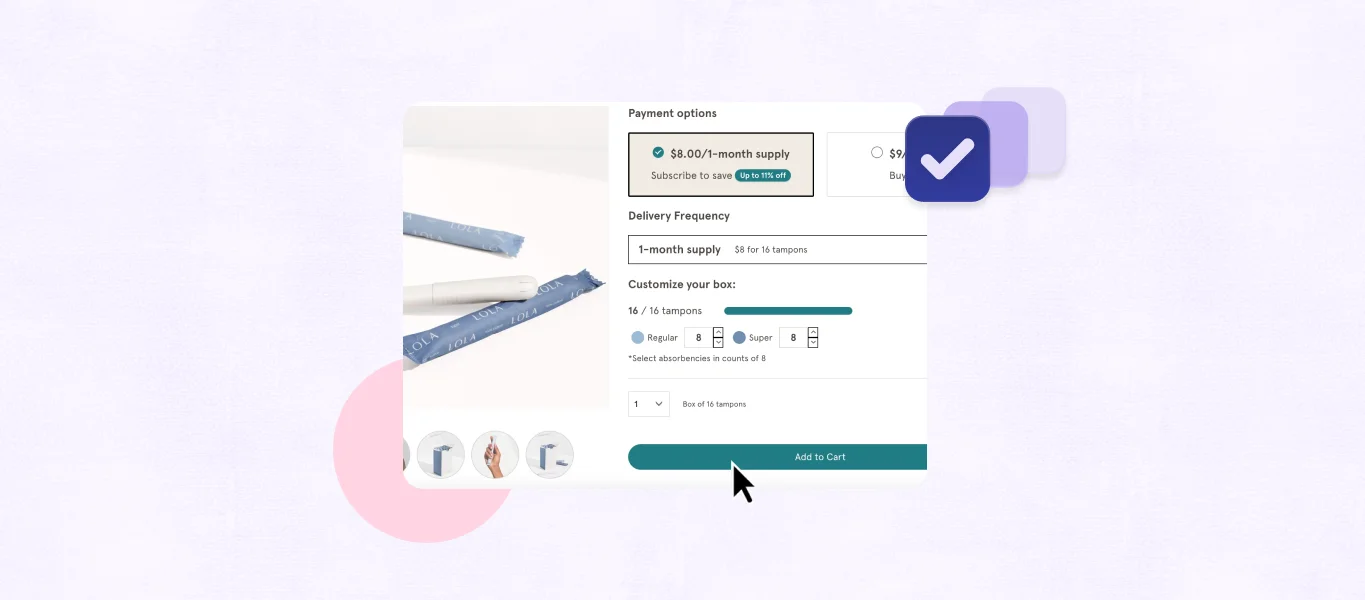As an ecommerce brand, an optimized tech stack is critical in driving overall revenue performance. Any hiccup, downtime, or misfire can risk immediate revenue opportunities and negatively affect long-term retention and revenue strategy.
To ensure a streamlined tech stack that also streamlines revenue, all touchpoints and sales channels should be considered.
This article covers key strategies and technologies you can implement in your ecommerce business to ensure your customers have a frictionless brand experience. These tactics, technologies, and strategies will help keep your brand operating at peak revenue and tech performance in 2023 and beyond.
Awareness: Deploy a data-driven advertising & content strategy
You only have one chance to make a first impression, and with customer acquisition costs (CAC) continuing to rise, it’s essential to get it right early on to avoid costly, timely, top-of-funnel errors.
As with any paid strategy, there are high-risk/high-reward considerations and it’s recommended to work with an expert who understands big-picture strategy and the day-to-day tactics. Below are important initiatives to streamline and track within your advertising strategy.
- Multi-channel marketing and big-data tracking: It’s crucial for brand awareness to be omnipresent and best positioned for the highest chance of a conversion. Be sure to track engagements and drop-off points at all stages and consider both successes and failures as guide points to increase budget and scale.
- Large network and platform updates: Ensure you have a pulse on any enterprise and major network updates—such as Google’s upcoming cookie and analytic changes—to avoid downtime. With the current version of Google Analytics sunsetting this summer and Google pushing for a cookieless future in 2024, tracking ad campaigns will look much different in the coming years. Get ahead of this now and upgrade your analytics platform.
- Revenue and profitability: Be sure you have air-tight tracking and reporting in place for all revenue metrics, especially return on ad spend (ROAS) and CAC. Turn off ad groups once spending has reached a certain limit and build a unified data source where conversion metrics and top-sellers are reported by margin. This data will inform strategy and profitability, and identify optimization opportunities up and down the funnel. Consider a unified analytics tool like Daasity to track trends across key data points.
Segmenting your audience and targeting specific groups with personalized ads can also help lower your cost per acquisition (CPA) and improve the effectiveness of your advertising spend. By understanding the behavior of these different customer segments, you can create more targeted and personalized marketing campaigns that are more likely to convert.
Personalization, positioning, & subscriptions, oh my!
It’s no secret that ecommerce personalization increases revenue, on-site engagement, and loyalty. In fact, according to a study by Dynamic Yield, 45% of consumers say they are more likely to shop on a site that is personalized versus not. And, if your advertising is personalized and targeted, the on-site experience should be as well.
An integrated experience solution like Nosto is a powerful tool for building a personalized, digital experience. Nosto can personalize your customers’ experience even down to weather conditions that affect shipping.
This is your foundation for building strong brand and customer loyalty, increasing lifetime value (LTV), and balancing CAC. This strategy creates a community that extends beyond one-time purchases and turns customers into evangelists of your brand.
What’s even better is that your brand has ultimate control of margin, conversion, and discount data points and where these apply in the customer journey. Brands like Chubbies and PuraVida are using Nosto to help personalize their customers’ ecommerce experience every day.
Now, what happens when you pair your personalization strategy with your review strategy? You increase conversion likelihood by four times, according to a recent case study from Okendo. For ecommerce reviews and insights, Okendo has over 50 integrations and an insight product that gathers real-time data through surveys.
Through these insights, you can learn customers’ buying habits, preferred products, preferred communication, and repeat purchase trends. Once repeat purchases are trending to three times or more, it’s time to start thinking about subscriptions. You’ve done all the hard work, now how do you keep them coming back? Create subscription and bundled offers that are irresistible.
So, how do you maximize your subscription strategy?
A subscription solution such as Recharge can help you grow average order value (AOV) through upsell workflows that are native to your brand’s user experience (UX). These workflows allow your customers to try new products and even combine one-time purchases with their subscription purchases.
This strategy even talks back to your SMS strategy, communicating upcoming charges or alerting your customer if a card has been declined. You can even set alerts for your brand if a customer cancels their subscription.
A streamlined subscription strategy, paired with an intuitive UX, can also help reduce churn and increase brand loyalty. By giving your customers the flexibility to swap products and skip, reschedule, or pause deliveries in their personalized portal, customers have ultimate control of their subscriptions. This self-service helps prevent costly cancellations.
Tracking, optimizing, & iterating
Now, many different analytics and tracking platforms are available to track and unify all of this data, each with unique features and capabilities. Some of the key features to look for in an analytics platform include the following:
Real-time data: The ability to view data in real-time allows you to make informed decisions quickly and react to changing market conditions.
Customizable dashboards: Look for a platform with flexibility, that allows you to create custom dashboards to show the most relevant and revenue-impacting data to your business.
Multiple integration options: The ability to integrate with other tools in your tech stack, such as your ecommerce platform and CRM, gives you a holistic view of your business performance.
Advanced segmentation: Look for a platform that allows you to segment your data by various criteria, such as location, device type, and referral source, to get a more detailed understanding of your audience and their behaviors.
Attribution modeling: This helps you understand the impact of different marketing channels on your overall business performance. It can be particularly useful for ecommerce businesses with complex sales funnels.
Choosing and customizing the right analytics platform for your ecommerce business can be daunting, but it is an essential step toward maximizing your revenue performance. By selecting a platform with the reporting features that are most relevant to your business, you can gain valuable insights into your audience and marketing efforts and make informed decisions to drive growth.
Tying it all together with frictionless UI/UX & lightning-fast performance
Site performance is another critical factor that can impact your ecommerce revenue performance. To optimize site performance, consider using a combination of technologies such as speed optimization tools, user interface (UI) and UX optimization platforms, and headless commerce solutions.
Check for speed blockers such as old code or large uncompressed images. These technologies and checkups can help improve the speed and functionality of your website, leading to better user experiences and, ultimately, more sales. Headless commerce solutions allow you to decouple the front end of your website from the back end, giving you more flexibility and control over the customer experience.
Working with an ecommerce agency such as Alpha Omega can also help you identify on-site growth opportunities and optimize your overall ecommerce strategy for peak revenue performance.
Cart integration
Shopping cart downtime…ick! Integrating your tech stack with a cart platform such as CartHook or Bold Cashier can help streamline the checkout process and improve your ecommerce conversion rate (CVR).
These platforms offer features such as abandoned cart recovery, one-click checkout, and post-purchase upsells, all of which can help increase conversions and revenues. Additionally, integrating with a cart platform can help you track key metrics such as cart abandonment rates and AOV, allowing you to identify areas for improvement and optimize your checkout process for peak revenue performance.
AOA helps brands create frictionless digital experiences that drive peak revenue.
Contact AOA today for a tech stack audit.
Sources
[1] eCommerce personalization trends, stats and best practices (Dynamic Yield)



